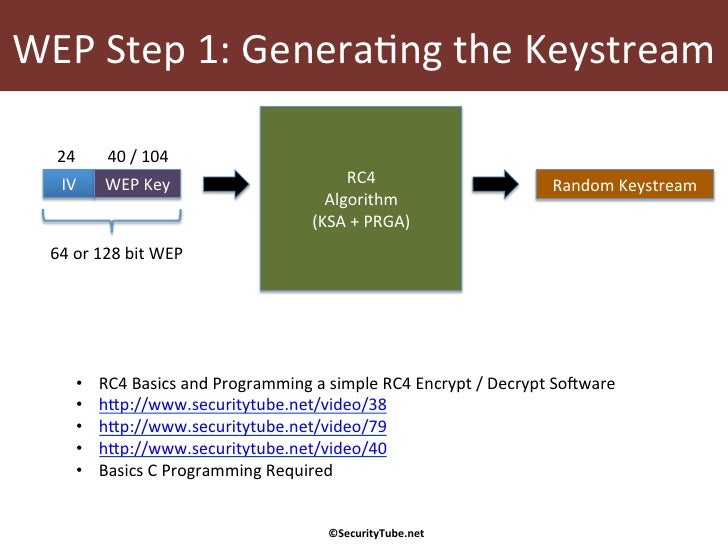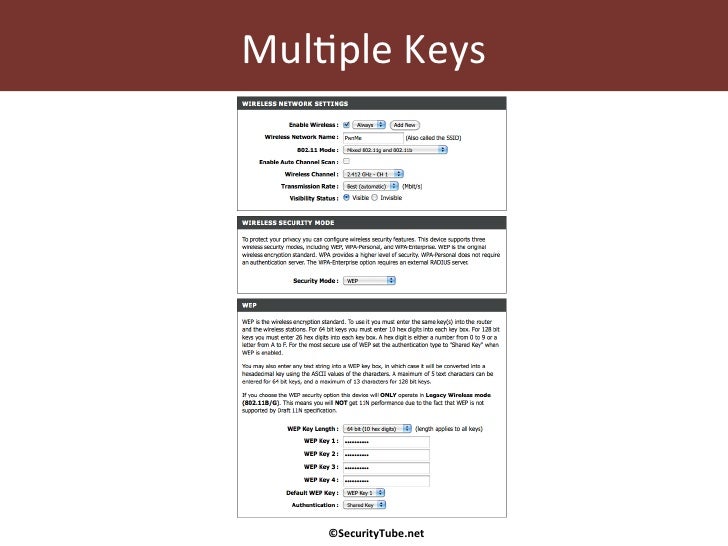C Generate Programmatically Rc4 Key
Creating and managing keys is an important part of the cryptographic process. Symmetric algorithms require the creation of a key and an initialization vector (IV). The key must be kept secret from anyone who should not decrypt your data. The IV does not have to be secret, but should be changed for each session. Asymmetric algorithms require the creation of a public key and a private key. The public key can be made public to anyone, while the private key must known only by the party who will decrypt the data encrypted with the public key. This section describes how to generate and manage keys for both symmetric and asymmetric algorithms.
Symmetric Keys
Jul 08, 2011 Let's generate a 1024 bit RSA private key and store it as temp.key: openssl genrsa -aes256 -out temp.key 1024 You can optionally change the 1024 above to 2048 if you want a more secure key (it's unnecessary though-even web sites mostly use 1024 bit keys); just know that it will be a bit slower when encrypting and decrypting. Sep 28, 2009 I am having an server which needs to generate a unique RC4 key for each session, share the rc4 key with an viewer and both exchange the data. The server is running on MAC and hence it is using OpenSSL API to generate the RC4 key. The viewer is using Microsoft Crypt API to decrypt. RC4 file encryption and decryption in C#. Rate this: Please Sign. (string key, string data) Encoding. I have tried that as well. But the problem here is the decrypted file from the PERL. I was not aware of PERL programming. The solution what was available in the internet will work good when we use the same solution for both encryption.
Oct 12, 2018 Syncfusion Essential PDF is a.NET PDF library used to create, read, and edit PDF documents. Using this library, you can protect the PDF document using encryption and set permission to the PDF document operations like printing, editing, and copy content in C# and VB.NET. Generating Keys for Encryption and Decryption.; 3 minutes to read +7; In this article. Creating and managing keys is an important part of the cryptographic process. Symmetric algorithms require the creation of a key and an initialization vector (IV). The key must be kept secret from anyone who should not decrypt your data. Mar 09, 2012 This feature is not available right now. Please try again later.
The symmetric encryption classes supplied by the .NET Framework require a key and a new initialization vector (IV) to encrypt and decrypt data. Whenever you create a new instance of one of the managed symmetric cryptographic classes using the parameterless constructor, a new key and IV are automatically created. Anyone that you allow to decrypt your data must possess the same key and IV and use the same algorithm. Generally, a new key and IV should be created for every session, and neither the key nor IV should be stored for use in a later session.
To communicate a symmetric key and IV to a remote party, you would usually encrypt the symmetric key by using asymmetric encryption. Sending the key across an insecure network without encrypting it is unsafe, because anyone who intercepts the key and IV can then decrypt your data. For more information about exchanging data by using encryption, see Creating a Cryptographic Scheme.
The following example shows the creation of a new instance of the TripleDESCryptoServiceProvider class that implements the TripleDES algorithm.
When the previous code is executed, a new key and IV are generated and placed in the Key and IV properties, respectively.
Sometimes you might need to generate multiple keys. In this situation, you can create a new instance of a class that implements a symmetric algorithm and then create a new key and IV by calling the GenerateKey and GenerateIV methods. The following code example illustrates how to create new keys and IVs after a new instance of the symmetric cryptographic class has been made.
C# Rc4 Encryption
When the previous code is executed, a key and IV are generated when the new instance of TripleDESCryptoServiceProvider is made. Another key and IV are created when the GenerateKey and GenerateIV methods are called.

Asymmetric Keys

The .NET Framework provides the RSACryptoServiceProvider and DSACryptoServiceProvider classes for asymmetric encryption. These classes create a public/private key pair when you use the parameterless constructor to create a new instance. Asymmetric keys can be either stored for use in multiple sessions or generated for one session only. While the public key can be made generally available, the private key should be closely guarded.
A public/private key pair is generated whenever a new instance of an asymmetric algorithm class is created. After a new instance of the class is created, the key information can be extracted using one of two methods:
Generate public certificate from private key certificate. Conversely,data that has been encrypted with a private key can be decrypted onlywith the corresponding public key.The owner of the key pair makes the public key available toanyone, but keeps the private key secret.A certificate verifies that anentity is the owner of a particular public key.Certificatesthat follow the X.509 standard contain a data section and a signaturesection.
The ToXmlString method, which returns an XML representation of the key information.
The ExportParameters method, which returns an RSAParameters structure that holds the key information.
AES uses the same secret key is used for the both encryption and decryption. Unlike AES 128 bit encryption and decryption, if we need a stronger AES 256 bit key, we need to have Java cryptography extension (JCE) unlimited strength jurisdiction policy files. To generate secrete key we can use Java KeyGenerator class which provides the functionality of a secret (symmetric) key generator. Key generators are constructed using one of the getInstance class methods of this class. GetInstance method of KeyGenerator takes parameter name of algorithm and Returns a KeyGenerator object that generates secret keys for the specified algorithm. This method traverses the list of registered security. /generate-secret-key-aes-java.html. If you want to manually specify the provider, just call KeyGenerator.getInstance('AES', 'providerName'). For a truly secure key, you need to be using a hardware security module (HSM) to generate and protect the key. HSM manufacturers will typically supply a JCE provider that will do all the key generation for you, using the code above.
C Generate Programmatically Rc4 Key Code
Both methods accept a Boolean value that indicates whether to return only the public key information or to return both the public-key and the private-key information. An RSACryptoServiceProvider class can be initialized to the value of an RSAParameters structure by using the ImportParameters method.
Asymmetric private keys should never be stored verbatim or in plain text on the local computer. If you need to store a private key, you should use a key container. For more on how to store a private key in a key container, see How to: Store Asymmetric Keys in a Key Container.
C Generate Programmatically Rc4 Keys
The following code example creates a new instance of the RSACryptoServiceProvider class, creating a public/private key pair, and saves the public key information to an RSAParameters structure.